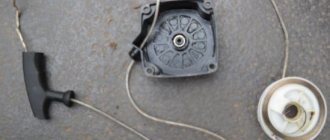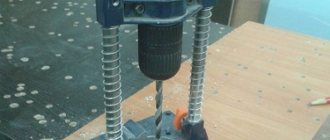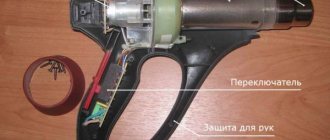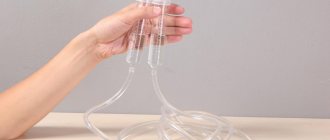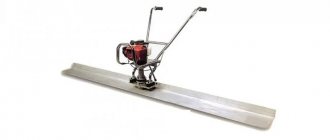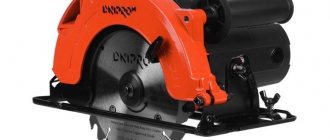If it happens that your sewer is clogged and you decide to deal with it without the help of others, then this article will be useful for you. In it, we outlined the most accessible and well-known methods, focusing separately on the cable for cleaning pipes.
Everyone knows that pipes sometimes become clogged and then they have to be cleaned. Household cleaning products for drain cleaning, available in a wide range in stores, do not always work. Then other drain cleaning tools can help you. However, let's talk about everything one by one.
Drain cleaning cable
A pipe cleaning cable usually gives good results and clears the most difficult and stubborn blockages. Today there are many types of sewer cables on sale, differing in purpose, size and materials from which they are made. For use in city apartments, the narrowest cable with a diameter of 6-9 mm is enough, which has sufficient hardness to break through tough blockages, however, it is flexible and elastic, so it simply goes through all the elbows and bends of sewers and risers.
Before starting work, you can straighten the edge of the cable with a few blows of a hammer, which will help to clean the pipes most efficiently and remove hair or animal fur from them. An ordinary cable five meters long ensures cleaning of sewer pipes throughout the apartment.
A cable made in production is a core made of two wires, onto which strands of wire are wound in layers in a certain way. The first layer is applied along the axis to the right, and the next layer - along the axis to the left.
In the manufacture of cables, durable steel St 70 is used. The finished cable must withstand rotational loads of up to 3500 rpm.
For a certain type of blockage in sewer pipes, the use of a specific cable model is recommended.
Today, models differing in geometric parameters and production materials are common:
- Cable. Its basis is an elastic iron core. It belongs to the type of household cables; its largest diameter does not exceed 12 mm. Machine drive, supported by a z-shaped handle.
- Spring-twisted. The structure is formed by an elastic spiral of a certain diameter with tightly pressed turns to each other.
Craftsmen use different types of cables to remove plugs. The key selection parameters are the pipe diameter and the required cable length.
How to make a cable with your own hands
You can make a cable with your own hands from simple materials. Manufacturing stages:
- you need to take a not very large and fairly elastic iron rope;
- fluff and bend its edge;
- Screw a ring to the opposite end of the cable so that it is convenient to make screwing movements when working;
- put a small piece of plastic pipe in the middle or wrap it in a hard material so that you can hold it comfortably.
Often, blockages appear not in the sewer pipes themselves, but in the siphons (elbows) of the plumbing fixtures. In this case, the use of an iron cable may damage the system and the integrity of the exhaust manifold.
To prevent this, you need to use a material that is not so hard and more elastic.
It is better to make a homemade cable for solving the above problems from a plastic bottle . To do this, you need to degrease its surface and apply a spiral pattern 15-20 mm wide. Then cut out the shape according to the design.
Next, for ease of use, a loop is made at one end. It will be needed to hold the cable during cleaning work. Small notches are made across the entire surface of the tape to effectively remove all debris from the pipes.
Rules for handling the tool
The plumbing cable is very easy to use. It is designed so that the user can remove the blockage with his own hands. In cases where it is necessary to clean the sewer, such a tool will help solve everything quite quickly. But you need to take care of some little things before starting work.
For cleaning you will need the following tools:
The only materials you will have to use are:
- polyethylene films;
- rubber gloves.
Since everything that will be removed from the sewer has an unpleasant smell and appearance, it is necessary to organize a place where it will be stored. A trash bag or plastic wrap is a good option.
It is worth taking care of protective clothing. The minimum is gloves. After preparation, the moment of cleaning comes. It is performed in the following sequence:
- Before using the cable, it is worth trying the plunger first. If the water still doesn't drain well, use the big guns.
- When the protective clothing is in place and there is somewhere to put the pieces of clog, you can run the cable into the pipe. If it goes normally, then the blockage is minor.
- Sometimes it is necessary to twist the handle of the tool so that it penetrates deeper.
- To destroy the blockage, you need to make forward movements and lightly twist the cable.
- Once the cable has been deployed to its full length, it can be removed.
- If he doesn't give in, don't be afraid. You just need to turn it a little more for the blockage to completely break down.
- In the most difficult cases, you will have to repeat the process several times until all elements are completely removed.
- After cleaning, the wastewater should flow out without any special obstacles.
- The cable should be thoroughly washed with detergents using a brush or sponge, then dried.
- When the work to remove the blockage is completed, you need to give a small pressure of water into the pipes to wash away the remaining plugs.
How to use the cable correctly
Stages of cable application:
- The free end is inserted into the hole of the pipe or toilet.
- Turning the rope clockwise, gradually move it through the pipes.
- Once the debris has been removed, the blockage has been cleared, and the water drain is working properly, you need to use a plunger.
- At the end of cleaning the pipes, you need to rinse the system with a bucket of boiling water.
First, the pipes are washed with a weak stream of water to ensure a positive result, and then with a stream under pressure to wash away all remaining debris. The device itself (wire or cable), which was used in the sewer cleaning process, after finishing the work must be washed from dirt, rinsed and dried. The next step will be to test its functionality, check for damage and, if necessary, carry out minor repairs. At the end, the cable must be carefully lubricated, twisted and placed in thick paper or fabric. Do not seal the package with the cable tightly.
Tips and tricks
Useful tips will help you clean the drain efficiently and keep your tool in good condition for a long time:
- After use, the cable must be washed, dried well, lubricated with technical oil and put into a paper bag or wrapped in paper, rolling the tool into a coil. It is not recommended to store it in a sealed plastic bag.
- When cleaning the sewer, hold the shaft with the other hand, controlling the progress of the work.
- When flushing the drain after removing the blockage, you can add a degreaser to the water.
If the water forms a funnel when draining, it means that the sewer has been cleaned efficiently.
Care
The multifunctional characteristics of a sewer cable depend not so much on the materials used in its manufacture, but on proper care.
After use it is recommended:
- Thoroughly clean the surface from sewer contaminants. This is done carefully under hot running water, using a rag;
- Upon completion of cleaning, all components are thoroughly dried. This is necessary to prevent the formation of a corrosive layer;
- The final step is to apply a thin protective layer of oil and wrap it in thick paper.
Using a plunger
The best result can be achieved if, after destroying the blockage using a plumbing cable, you additionally clean the drain system with a plunger.
The order of its use is as follows:
- If the sink or sink is equipped with an overflow hole, it must be plugged. Otherwise, it will be impossible to achieve the required pressure in the sewer pipe.
- The plunger should be placed over the drain hole, pressing the edges of the rubber part tightly against the surface of the sink.
- Next, you need to make several translational movements without lifting the device from the hole.
- Then you should sharply tear the plunger away from the drain. Most of the debris will spill out.
Using a plunger and cable to remove blockages
At the end of the procedure, the sewer system is washed with a large amount of boiling water. Pipe cleaning cable
Wire for pipe cleaning
In addition to the elastic iron cable (pipe diameter - 300 mm), professionals also have iron wire (pipe diameter - 250 mm) to combat blockages. Thus, when carrying out work in cases where pipes have a diameter of 350 mm, water is used to wash away all accumulated contaminants.
Traditionally, clearing a blockage in a sewer with wire consists of the following operations:
- An iron wire with a tip (ring or ball) is inserted into the well through a reversing pipe secured with a clamp.
- To remove the objects that caused the blockage, place a pitchfork in the lower dry well.
- Make a wire clamp.
- The wire is given translational movement.
This method of clearing blockages is extremely common, however, it is not absolute, since the wire for clearing pipes during translational movements is transformed into a spiral, which results in a decrease in its ultimate elasticity. If the diameter of the pipes is more than 200 mm, the wire may not reach the blockage due to such springing movements. In this case, other devices may be used.
Flexible shaft
The most effective, when compared with wire, would be an elastic shaft used for cleaning drains. It is based on an iron cable, the shell of which is a densely wound spring-spiral made of wire with a diameter of 0.5 cm. Depending on the task, the length of the cable can be up to 55 meters, while the diameter in this case will be 2-3 cm.
- sewer cleaning in a private house;
- cleaning sewer pipes;
- how to break a sewer pipe at home.
Metal tape
Sewer cleaning tape ( length – 7-30 m, thickness – approximately 3 mm, width – 25 mm ) is another device that is gaining widespread use. Its elastic and fairly solid design allows you to clean pipes over a fairly long distance. To break through blockages, put on an attachment similar to a quadrangular peak. The tape is equipped with a comfortable handle.
Due to the fact that the above-mentioned devices used in the mechanical sewer cleaning method differ in design , you can successfully remove blockages without calling professionals.
Household drain cleaning products
This method of cleaning sewer pipes is called chemical, because the blockage is removed through the reaction of a special agent and the substances that caused the blockage. The main component of most drugs is a strong acid. This is what dissolves blockages and cleans pipes.
However, the use of such tools implies compliance with all safety rules . Work should be done exclusively with rubber gloves, avoiding contact of the substance with the skin, especially the mucous membranes. What specific pipe cleaning products to choose is everyone’s business. But be sure to read the instructions on the package before purchasing. If you have a plastic water supply, find out whether the composition you have chosen is allowed to be used for this material. It is a fairly common belief that liquid formulations act more efficiently and faster than bulk formulations.
Please read the instructions again before use . The method and time of exposure differ for different drugs. Follow the recommendations on the package, follow the indicated dose and duration of action. If the chosen product does not work, we recommend choosing other products that will be used to clean the sewer.
Why use such devices?
A drain cleaner is a long, rope-like steel device with a handle for turning. It is pushed into the place where the plug has formed, and then they begin to scroll. With the help of rotational movements, the cable is able to wind fibers around itself during the cleaning process, as well as fibrous objects that could cause a blockage.
Quite often, rags, lumps of hair or wool, and paper get into the pipes. All these seemingly harmless items can cause serious problems. But they can be easily removed thanks to the cable. A very simple device can solve really serious problems.
If the accumulated debris in the pipes is not removed in time, the entire sewer system may simply fail. Flooding, burst pipes - all because of a few hairballs or furballs. Therefore, in order not to wait for services that can clear the drain, they came up with such an effective economic device.

